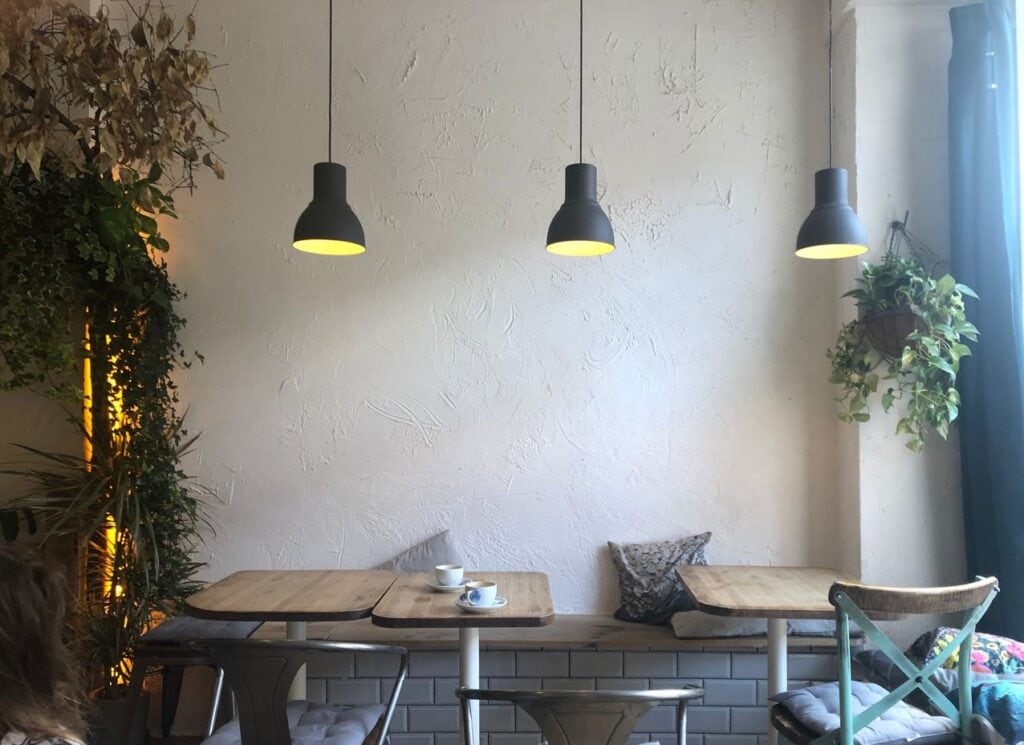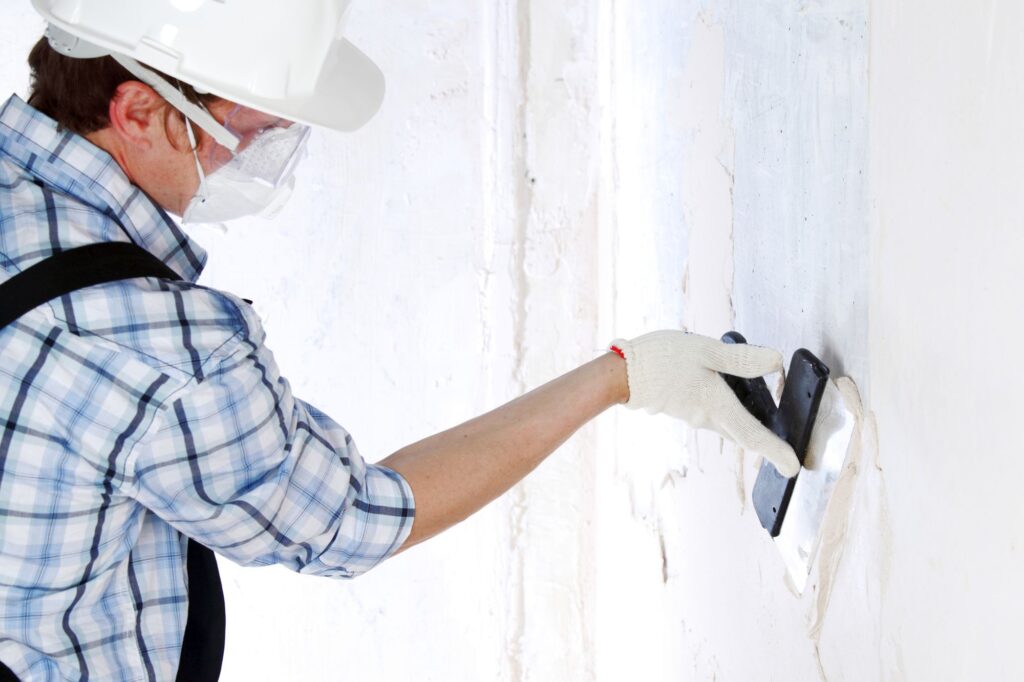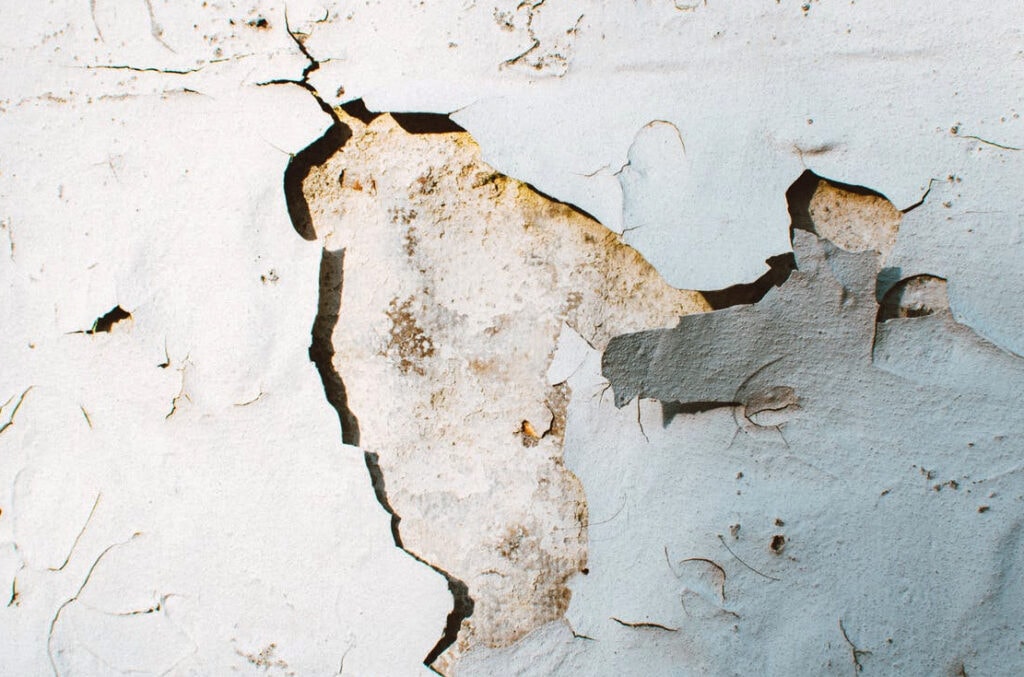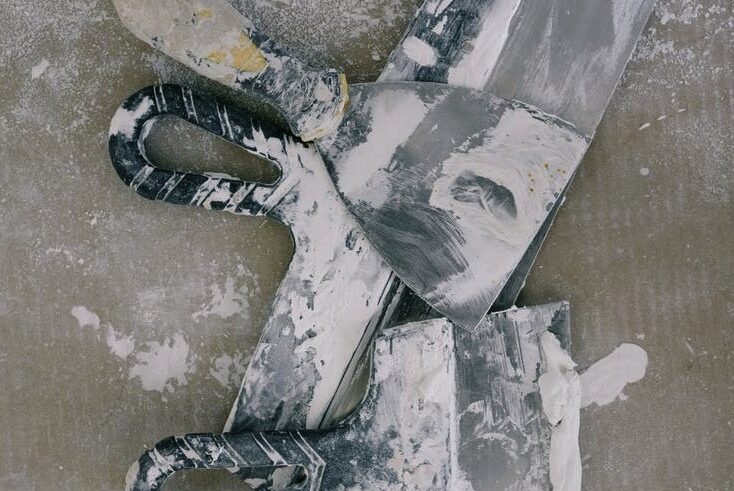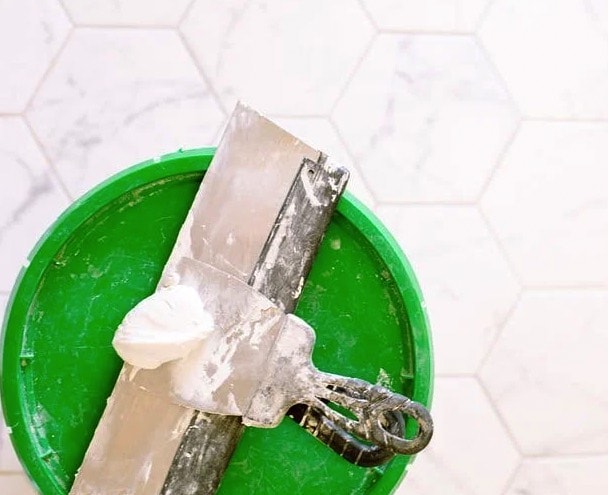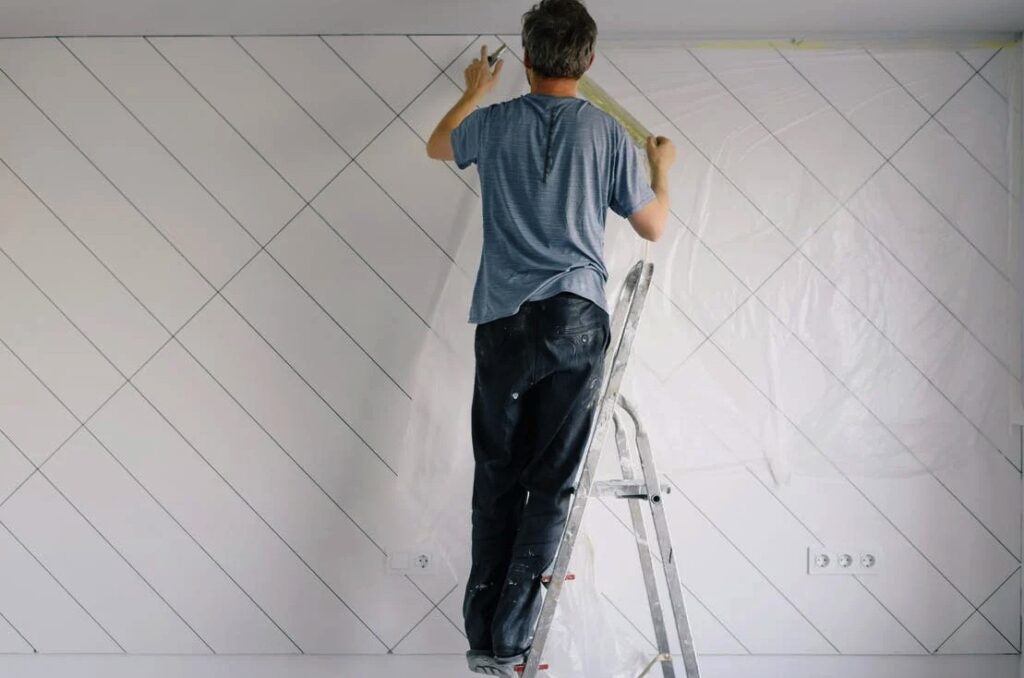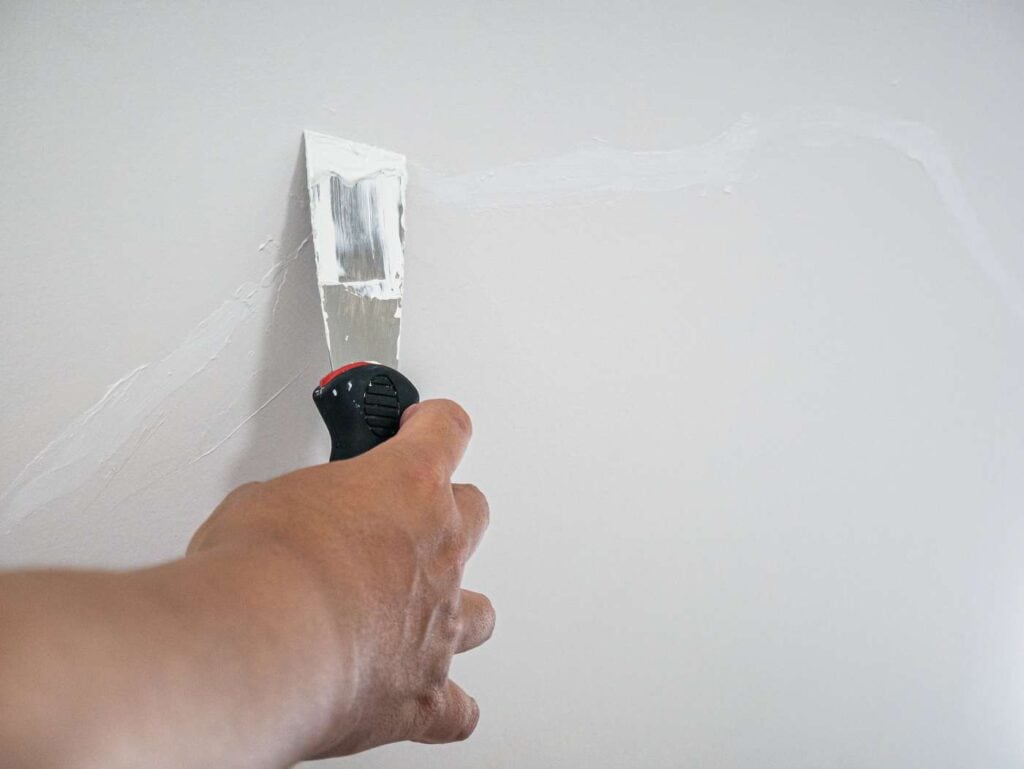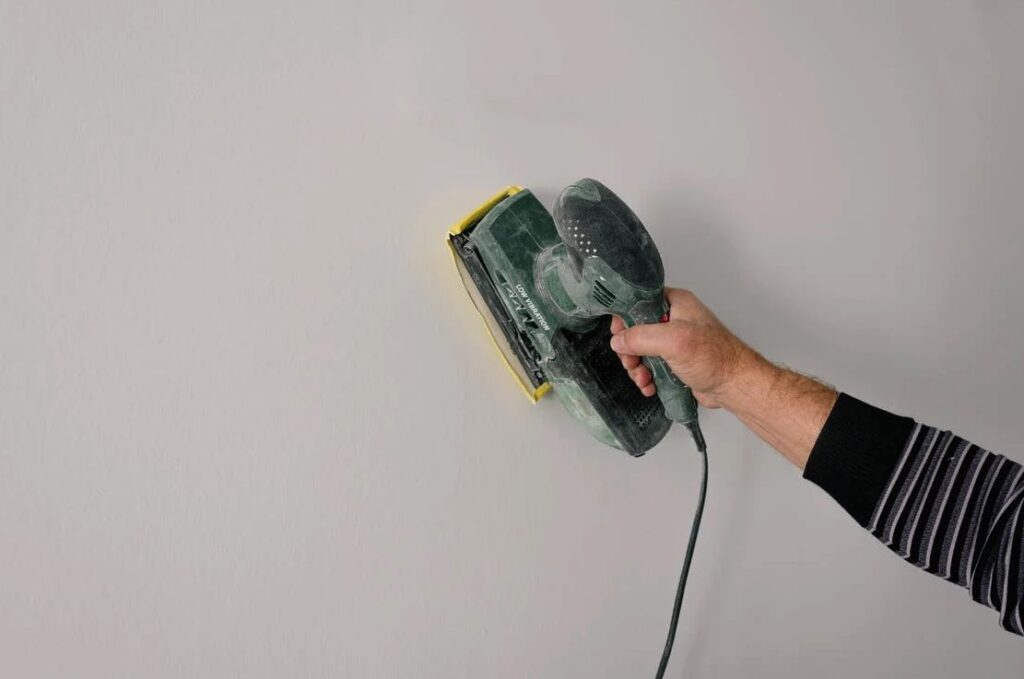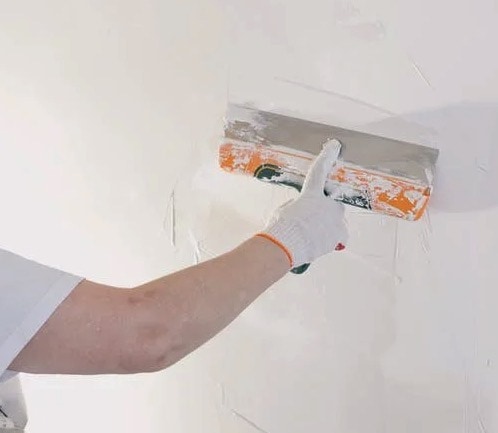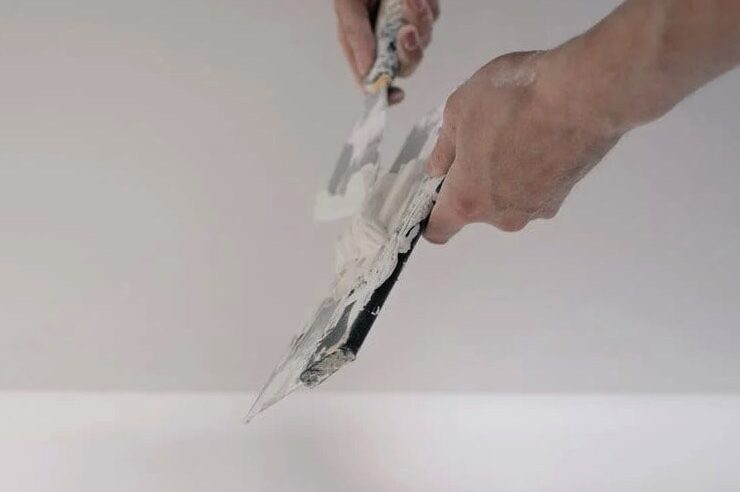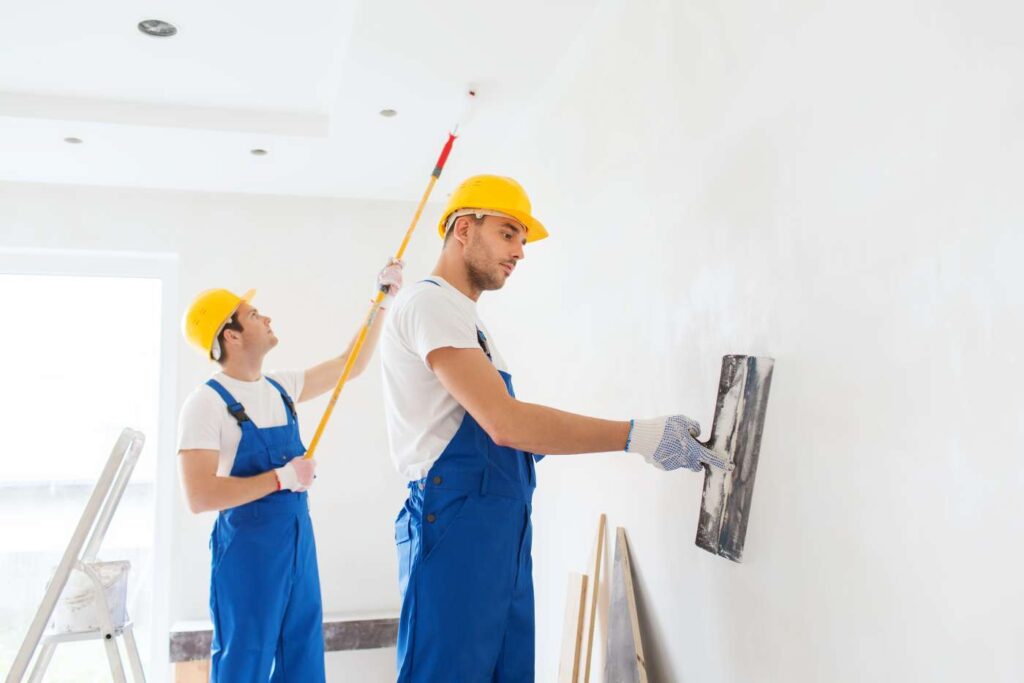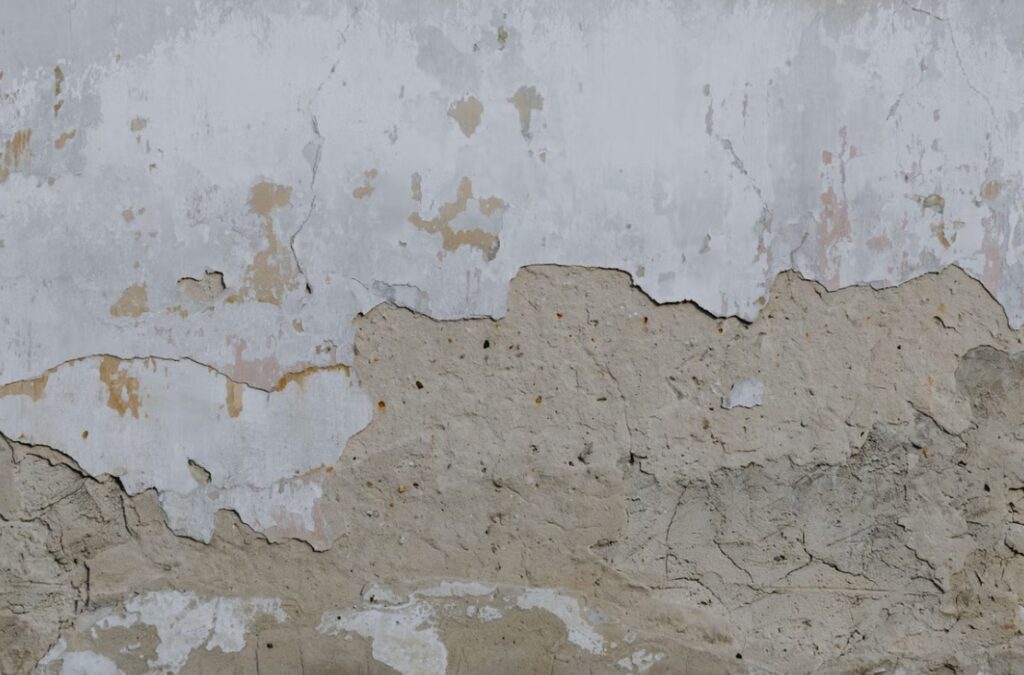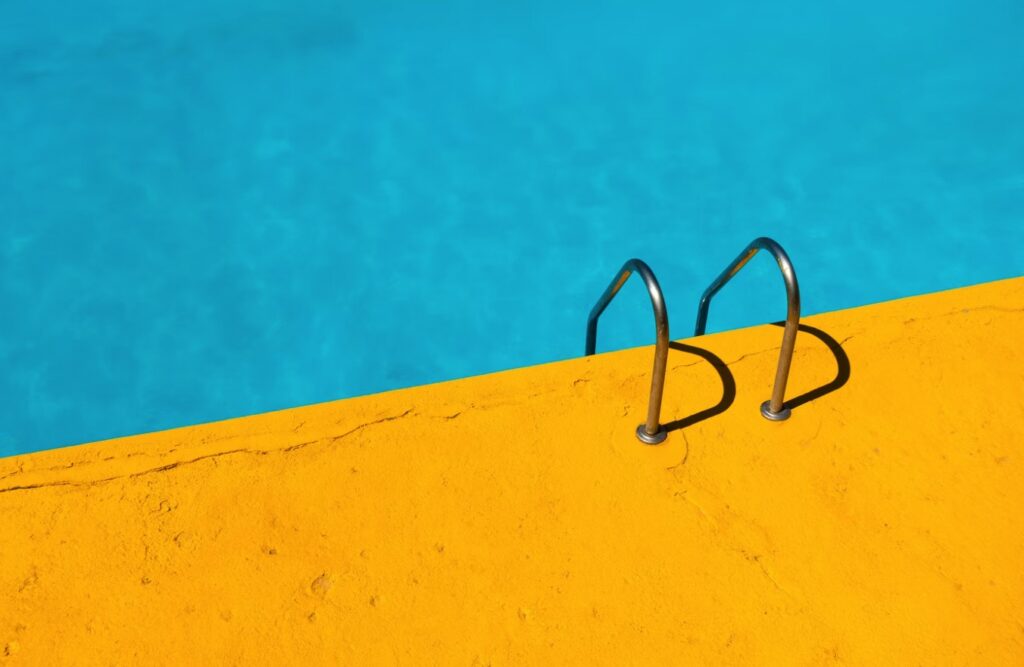Understanding the various types of plastering is essential. Plastering not only plays a pivotal role in the aesthetics of a building but also contributes significantly to its durability and insulation properties.
In this comprehensive guide, we'll delve into the fascinating plastering world. From the ancient techniques that have stood the test of time to the modern methods designed for efficiency and sustainability, we'll explore today's vast array of plastering types. You'll learn about the materials used, the techniques employed, and the specific applications of each plastering type, providing you with a solid foundation of knowledge on this crucial construction process.
Whether you're planning a renovation project, considering a career in construction, or simply aiming to broaden your knowledge, this post will equip you with the insights you need. So, let's dive into the art and science of plastering and uncover the secrets behind creating smooth, durable, and visually appealing surfaces.
Types Of Plaster Based On Material
Plastering is a crucial construction technique to achieve smooth and durable surfaces on walls and ceilings. The choice of plaster material significantly affects the finish, durability, and application method. Here, we explore the most common types of plaster based on material, each with unique properties and applications.
Cement Plaster
Cement plaster is a workhorse in the construction industry, known for its robustness and suitability for damp conditions. Depending on the surface and environmental requirements, it is a mixture of Portland cement, sand, and water applied in a single or double coat. Typically used indoors and outdoors, cement plaster can be applied to masonry, brick, and concrete surfaces. Its thickness varies from 12 to 20 millimetres, offering a solid, durable coating that meets environmental stressors.
Lime Plaster
Lime plaster, one of the oldest types of plasters, consists of lime, sand, and water. It is appreciated for its breathability and flexibility, reducing the risk of cracks in shifting structures. Lime plaster is environmentally friendly, offering a natural aesthetic with a slightly textured finish. It is especially suitable for restoring historical buildings or use in new constructions seeking a traditional aesthetic. Adding a small quantity of cement can enhance its strength, making it a versatile choice for interior and exterior applications.
Gypsum Plaster
Gypsum plaster, known for its quick setting time and ease of application, is made from gypsum powder mixed with water. It provides a smooth, white finish ideal for interior walls and ceilings. Gypsum plaster does not require curing with water, allowing for faster construction processes. Its fire resistance and thermal insulating properties make it popular in modern construction. However, it is unsuitable for wet areas or exteriors due to its poor moisture resistance.
Mud Plaster
Mud plaster offers an eco-friendly, cost-effective solution primarily used in rural areas and sustainable building projects. Composed of clay, sand, and straw or dung for reinforcement, mud plaster is applied in multiple layers. It provides excellent thermal mass, helping to regulate indoor temperatures. While less durable or water-resistant than other types of plaster, it can be an ideal choice for interior walls in dry climates.
Stucco Plaster
Stucco plaster is a decorative plaster used for exterior and interior surfaces, offering a range of textures and finishes. It typically consists of cement, lime, and sand, applied in three coats to achieve a thickness of about 25mm. Stucco can be finished in various ways, including smooth, textured, or patterned, making it a versatile choice for achieving aesthetic appeal alongside durability.
Types Of Plaster Based On Finishing Techniques
Plastering protects and strengthens the structural integrity of walls and ceilings and provides a canvas for aesthetic expression. The finish applied to plaster can dramatically alter the appearance and feel of a space; choosing the finishing technique is as crucial as the choice of plaster material itself. Here, we explore the various plaster finishes that can be applied to interior and exterior surfaces, each offering unique textures and visual appeal.
Smooth Cast Finish
Also known as a neat or white coat, the smooth cast finish is characterized by its smooth surface with no texture. This finish is often associated with gypsum-based plasters and is ideal for creating a clean, minimalist look. It is an excellent base for paint, wallpaper, or other decorative treatments.
Rough Cast Finish
The roughcast or float finish is known for its coarse appearance, achieved by mixing coarse aggregates with cement and sand. This technique is commonly used for exterior stucco but can add a rustic charm to interior spaces. The rough texture is achieved through a specific troweling technique, bringing the aggregates to the surface.
Sand Faced Finish
This finish involves applying two coats of plaster, with the final coat containing a thin application of sand to create a finely textured surface. Sand-faced finishes are durable and provide a subtle texture that adds depth and interest to walls without overwhelming the space.
Pebble Dash Finish
Pebble dash finishes incorporate small pebbles or crushed stones into the final coat of plaster, creating a highly textured surface. This technique is often used on exterior walls for its durability and unique aesthetic but can also be used indoors to create feature walls or accents.
Scrapped Finish
In a scrapped finish, a thick layer of plaster is applied and then partially scraped away to reveal a textured surface. This technique can help hide imperfections and add a dynamic, tactile quality to walls.
Depeter Finish
The deeper finish uses larger aggregates, such as gravel or flint, pressed into the surface of the plaster while still wet. This rare finish can create striking, highly textured surfaces that stand out in interior and exterior applications.
Textured Finish
Textured finishes encompass various techniques that create patterns and textures on the plaster surface. The possibilities are endless, from simple brushed textures to complex patterns achieved with specialized tools. Textured finishes can add depth, movement, and character to a space.
Stucco Plaster Finish
Stucco finishes are applied in multiple layers to achieve a thick, durable surface with a distinctive texture. This versatile finish can be smooth or textured and is suitable for interior and exterior applications. Stucco provides an excellent base for decorative painting or can be left natural for a more subtle effect.
Special Finishes
Special finishes, such as acoustic plaster, waterproof plaster, and others, serve specific functional purposes and provide aesthetic appeal. These finishes can enhance the usability of space by improving sound insulation, moisture resistance, or other desired properties.
Specialty Plasters
In the world of construction and interior design, plaster plays a crucial role in creating surfaces that are structurally sound and aesthetically pleasing. Beyond the traditional plastering materials, the industry has seen significant advancements with the introduction of specialty plasters. These innovative products cater to various applications, from artistic plaster craft replications to high-performance finishes in demanding environments.
Ceraplast™ For Mold-Casting And Ceramic Products
Ceraplast™ is a specialty plaster designed primarily for mould-casting, particularly in plaster craft projects and ceramic product manufacturing. Available in white, Ceraplast™ offers a superior finish and consistency for detailed work, ensuring that the final products are of the highest quality. Its formulation is optimized for easy demolding and fine-detail reproduction, making it a favourite among professionals and hobbyists.
Gyprock's Range For Diverse Applications
Gyprock presents a comprehensive range of specialty plasters tailored to specific needs. This includes:
- Casting Plaster: Ideal for manufacturing plaster glass, fibre-reinforced plaster sheets, cornices, and general casting applications.
- Hardwall Plaster: Produces a smooth, white finish over cement-rendered masonry walls or concrete soffits, enhancing the aesthetic appeal of interior spaces.
- Pottery Plaster: Specifically used to manufacture moulds for casting sanitary ware, offering durability and precision.
- Dental Plaster: A high-precision plaster for creating detailed dental application moulds.
- Superfine Plaster: Engineered for finishing joints in fiber-reinforced plaster sheets, ensuring seamless surfaces.
- Plaster Accelerator: A solution that speeds up the setting time of gypsum-based plaster products, useful in time-sensitive projects.
Specialty Plaster Llc: Custom Plaster Work And Restoration
Specialty Plaster LLC, based in Jamesburg, New Jersey, brings three decades of expertise in custom plaster work, restorations, and repairs. Catering to clients across the 48 contiguous United States, they handle projects of all sizes, emphasizing the versatility and adaptability of plaster in modern construction and renovation projects. Their commitment to quality and craftsmanship underscores the potential of specialty plasters in transforming spaces.
FAQs About Plastering
Plastering is applying a layer of plaster to walls and ceilings, which contributes to aesthetics and structural integrity.
There are several types of plastering, each with its materials, techniques, and applications. Common types include cement plaster, lime plaster, gypsum plaster, mud plaster, and stucco plaster.
Factors such as the environment, desired finish, structural requirements, and budget influence the choice of plastering material.
Cement plaster is known for its robustness and suitability for damp conditions. It is typically made from Portland cement, sand, and water, offering durability and versatility.
Lime plaster is valued for its breathability, flexibility, and natural aesthetic. It's often chosen for historical renovations or projects seeking a traditional look.
Plastering Techniques
Plastering is both an art and a science, requiring precision, patience, and techniques to achieve a flawless finish. Whether you're a DIY enthusiast or a seasoned professional, mastering plastering can transform any space's look and feel. Here, we delve into essential plastering techniques that ensure smooth, durable walls and ceilings.
Mixing And Applying Plaster
The consistency of your plaster mix can make or break your project. Aim for a mix that's not too thick but has enough body to stay on your trowel without dripping. When applying plaster, start with a thin first coat to ensure good adhesion, followed by a thicker second coat for smoothness. Remember, the goal is flatness over smoothness; you can always smooth out imperfections later.
Tools Of The Trade
Investing in high-quality plastering tools is non-negotiable. A stainless steel plastering trowel, a bucket trowel, a chalkboard, and a mixing device are essential. Keep your tools clean as you work; dried plaster can be intricate to remove and affect your finish on subsequent jobs.
Techniques for a Perfect Finish
- Control the Angle and Pressure: The angle and pressure you apply with your trowel are critical. Start with the trowel slightly angled; as you move and the amount of plaster on the trowel decreases, decrease the angle to smooth the plaster onto the surface.
- Tackle the Ceiling with Care: If plastering a ceiling, avoid standing directly underneath your work area to prevent plaster from falling into your eyes. Also, cautiously approach the edges between the ceiling and walls to prevent clumping.
- Ensure Even Thickness: Consistency in the thickness of your plaster is vital for both the first and second coats. This uniformity helps prevent bulging and ensures a smooth finish.
- The 'Trowelling Up' Process: After your initial coats, the 'trowelling up' process begins. This stage is crucial for filling any holes and removing trowel marks. The plaster should be tacky but not too wet, allowing you to smooth out imperfections effectively.
- Final Touches: As the plaster sets, it will darken in colour, indicating it's ready for the final trowel. Aim for a finish that's even and slightly polished but not overly smooth, as this can make it difficult for paint or wallpaper to adhere.
Conclusion
Plastering is a crucial construction technique that contributes to the aesthetics and durability of buildings. It uses materials, techniques, and specific applications to create smooth, durable, and visually appealing surfaces. Common plaster types include cement plaster, lime plaster, gypsum plaster, mud plaster, stucco plaster, and exceptional finishes.
Cement plaster is a robust and suitable material for damp conditions, while lime plaster is environmentally friendly and offers a natural aesthetic with a slightly textured finish. Gypsum plaster is quick-setting and easy to apply, providing a smooth, white finish ideal for interior walls and ceilings. Mud plaster is eco-friendly and cost-effective, primarily used in rural areas and sustainable building projects.
Stucco plaster is a decorative plaster used for interior and exterior surfaces, offering a range of textures and finishes. It typically consists of cement, lime, and sand, applied in three coats to achieve a thickness of about 25mm. Stucco can be finished in various ways, including smooth, textured, or patterned.
Finishing techniques are also crucial in plastering. Smooth cast finishes, roughcast finishes, sand-faced finishes, pebble dash finishes, scrapped finishes, de Peter finishes, and textured finishes offer unique textures and visual appeal. Stucco plaster finishes are applied in multiple layers to achieve a thick, durable surface with a distinctive texture, suitable for interior and exterior applications.
Special finishes, such as acoustic plaster and waterproof plaster, serve specific functional purposes in addition to aesthetic appeal, such as improving sound insulation, moisture resistance, or other desired properties. Understanding these types of plastering is essential for those planning renovation projects, considering a career in construction, or simply broadening their knowledge.
Plaster is crucial in construction and interior design, providing structurally sound and aesthetically pleasing surfaces. Specialty plasters, such as Ceraplast™ for mould-casting and Gyprock's range, cater to various applications, including artistic plaster craft replications and high-performance finishes in demanding environments. Gyprock offers a range of plasters, including Casting Plaster, Hardwall Plaster, Pottery Plaster, Dental Plaster, Superfine Plaster, and Plaster Accelerator. Specialty Plaster LLC, based in Jamesburg, New Jersey, has three decades of expertise in custom plaster work, restorations, and repairs.
Plastering techniques involve precision, patience, and the proper techniques to achieve a flawless finish. Mixing and applying plaster requires a consistent mix, using high-quality tools like a stainless steel trowel, bucket trowel, hawk board, and mixing device. Techniques for a perfect finish include:
- They are controlling the angle and pressure.
- I am handling the ceiling with care.
- It ensures even thickness.
- I am starting the 'trowelling up' process.
- We aim for an even, slightly polished finish as the plaster sets.
These techniques help create a smooth, durable wall and ceiling that can be used for various projects.
Content Summary
- Knowing various plastering types is crucial for building aesthetics and durability.
- This guide explores ancient and modern plastering methods for a solid understanding.
- Learn about materials, techniques, and applications to enhance your knowledge.
- Whether renovating or pursuing a construction career, this post offers valuable insights.
- Cement plaster is robust and ideal for damp conditions indoors and outdoors.
- Lime plaster, with its breathability, is excellent for historical renovations.
- Gypsum plaster offers quick setting and smooth finishes for interiors.
- Mud plaster is eco-friendly and suitable for sustainable projects.
- Stucco plaster provides decorative options for both interiors and exteriors.
- Plaster finishes dramatically alter space aesthetics and feel.
- A smooth cast finish is perfect for a minimalist look, ready for paint or wallpaper.
- A roughcast finish adds rustic charm, particularly suitable for exteriors.
- The sand-faced finish offers durability and subtle texture to walls.
- The Pebble Dash finish incorporates stones for a textured, durable exterior.
- The scrapped finish hides imperfections and adds tactile quality to walls.
- Depeter finish creates striking textures with larger aggregates.
- Textured finishes add depth and character to plastered surfaces.
- Stucco plaster finish provides durability and versatility for various needs.
- Special finishes like acoustic or waterproof plaster serve functional purposes.
- Specialty plasters cater to specific requirements, from art to high-performance surfaces.
- Ceraplast™ is ideal for detailed plastercraft and ceramic projects.
- Gyprock offers specialty plasters for diverse construction needs.
- Specialty Plaster LLC specializes in custom plasterwork and restoration.
- Plastering requires precision and specific techniques for flawless results.
- Proper plaster mixing ensures optimal application and consistency.
- Essential tools include trowels, hawk boards, and mixing devices.
- Control the angle and pressure for a perfect finish with your trowel.
- Be cautious when plastering ceilings to prevent mishaps.
- Consistency in plaster thickness ensures a smooth, even surface.
- 'Trowelling up' fills holes and removes imperfections for a polished finish.
- Aim for a final plaster finish that's even and suitable for painting.
- Cement plaster provides robustness and reliability in construction.
- Lime plaster offers breathability, which is ideal for preserving historic buildings.
- Gypsum plaster is quick-setting, making it suitable for time-sensitive projects.
- Mud plaster is eco-friendly and regulates indoor temperatures effectively.
- Stucco plaster adds decorative flair to both interiors and exteriors.
- Different finishing techniques offer varied textures and visual appeal.
- A smooth cast finish creates a clean, minimalist aesthetic.
- A roughcast finish adds texture and character, especially outdoors.
- The sand-faced finish provides durability and subtle texture.
- The Pebble Dash finish offers a unique, textured exterior surface.
- The scrapped finish adds tactile interest while concealing imperfections.
- Depeter finish creates visually striking, textured surfaces.
- Textured finishes offer depth and movement to plastered surfaces.
- Stucco plaster finish provides durability and versatility for diverse needs.
- Special finishes serve functional purposes alongside aesthetic appeal.
- Specialty plasters cater to specific construction and design needs.
- Mastering plastering techniques ensures flawless, durable surfaces.
- Gyprock's specialty plasters offer tailored solutions for various applications.
- A perfect plaster finish demands skill, attention, and the right tools.


